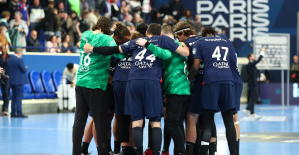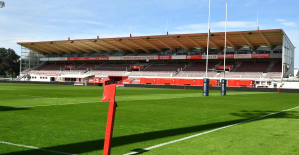It began in 1335 with the order of the Polish king Casimir the Great: A new city was to be founded next to Kraków, which should bear his name - according to legend as a gift to his Jewish mistress. Kazimierz came into being; today it is a district of Kraków, but fascinates with its very own flair. Five pages of a neighborhood that is one of the most interesting in Europe.
Wonderful how the sun shines through the stained glass windows and lets the gold leaf on the gallery shine, the mahogany of the pillars and the blue velvet of the Torah curtain! Built in the 19th century in Moorish style, the Temple Synagogue is still the most beautiful place of worship in Kazimierz. And even if most visitors are tourists and services only take place irregularly, the synagogue is once again a lively place of Jewish faith.
The fact that Kazimierz attracts visitors from all over the world as the "Jewish Quarter" has its origins in its early history. After the death of the enlightened ruler Kazimierz in 1370, Kraków's Jews were expelled and found refuge here. The rise of the city began, Kazimierz became the religious and cultural center of the Jews in Poland.
Only incorporated into Kraków almost five centuries after its founding, Kazimierz remained a fascinating world unto itself. Jews and Christians worked together in small workshops, and synagogues, churches and monasteries were built in close proximity to each other – all of this was not always free of conflict, but was still quite unusual.
The German occupation in 1939 ended this radically. Kazimierz's Jews were expelled and crammed into a ghetto on the other side of the Vistula; Most of them were murdered there or in Auschwitz – one of the many mass crimes committed by the Nazis, as witnessed in Steven Spielberg's film Schindler's List (1993).
After 1945, the Polish communists, who were dependent on Moscow, let the district degenerate, synagogues became warehouses, the former Jewish apartments became boarding houses, and the district was considered a gathering place for criminals, alcoholics and prostitutes. The rise after 1989 was all the more rapid: work and restoration was carried out everywhere, synagogues soon gleamed in their old glory again, restaurants, cafés, clubs and boutiques emerged.
Hollywood was not entirely to blame for this. "Schindler's List", the successful film about the German-Moravian manufacturer Oskar Schindler, who saved around 1,200 Jewish forced laborers from extermination camps during the Holocaust, was largely shot on original locations in Kraków - especially in Kazimierz. Tourists and locals discovered the quarter and its Jewish history, film tours today lead through Kazimierz and to Oskar Schindler's actual factory in the opposite Podgorze quarter on the other bank of the Vistula.
The beautiful prayer houses in Kazimierz also include the Kupa Synagogue right next to the Tempel Synagogue - a place of similar splendor, but which never seems exuberant here, but rather like an invitation: take a close look! There are, for example, the murals on the biblical story, restored and rescued from oblivion. And yet, nowhere is there an illusion of continuity that would claim that the decades between 1939 and 1989 never existed.
On the contrary, and it is precisely the memory that gives the district its dignity and sometimes disturbing beauty. For example in the New Jewish Cemetery (which has of course existed since 1800), where fragments of tombstones were used to create a brick memorial. They were saved after the German occupation, because the Nazis had also destroyed gravestones here and sold them as building material.
The completely preserved stones with the Hebrew inscriptions would probably have been completely unnoticed if the tourists hadn't come. After all, the vast majority of descendants of those who died are no longer alive, but were murdered in the Holocaust.
The cemetery of the Remuh synagogue, which is also worth seeing, has a similar history. Here the destroyed tombstones have become a kind of Wailing Wall, where travelers from all parts of the world stop. On Shabbat evening there is a service in the still active synagogue. But not only at this time it is a place full of life. Ulica Szeroka, where the Remuh Synagogue, the Old Synagogue and the Popper Synagogue are located, is just a short walk from Wawel Castle and is once again the center of the district.
The culinary heart of Kazimierz also beats on the famous Ulica Szeroka, where three of the quarter's seven synagogues are located - or rather: one of its hearts and perhaps also the most controversial. Some criticize the "hodgepodge" that is served behind the shtetl-trimmed facades.
“Jerusalem tomato soup” – what will that be, and why does the adjective “jewish”, which has become an advertisement, have to appear before every dish? Such criticism is certainly correct, but it is also true: everything tastes delicious and the prices are still extremely moderate. Spicy venison goulash in a hollowed-out loaf of bread does not ask for an additional designation.
If you want to be on the safe side, you can order traditional Yiddish specialties such as gefilte fish or the cholent stew (with lamb or vegetarian) at “Klezmer-Hois”. And then, with a white wine from the Israeli Galilee and klezmer music playing in the evening, think calmly about what it would be like if such supposedly "pretty" places didn't exist - and so the Nazis had ultimately triumphed completely with their obliteration mania.
Not only the food, but also the ambience is worth a visit to the restaurants. In the "Klezmer-Hois" with its carpeted corridors, books by Stefan Zweig and Joseph Roth translated into Polish are stacked on the walls - the restaurant also houses a small publishing house.
The bright "Hamsa" with its fresh hummus and salad specialties is also reminiscent of Tel Aviv with the hanging color photographs, while in the "Singer" restaurant you can sit at sewing machine tables to taste Polish specialties of the region. For example, beetroot and sour Zurek soup with egg or the delicious pierogi – dumplings filled with wild mushrooms, cream cheese, cabbage or meat. And don't be snobbish, these simple dishes will appeal to even the pickiest of foodies.
The world knows Helena Rubinstein (1872–1965) as an American multi-millionaire and queen of the cosmetics industry; she was born as Chaja Rubinstein on December 25, 1872 in Kazimierz. On the occasion of her 150th birthday, the Galicia Jewish Museum is showing a special exhibition on her adventurous life in her birth district until April 2023.
The museum, which was already a magnet for visitors thanks to its complex and appealing depiction of Jewish life in Galicia at the time, reviews a unique success story here. A young woman who grew up in rather modest circumstances in Kazimierz moves to Vienna and then emigrates to Australia, changing her first name to Helen.
In Down Under she experimented with skin creams for the first time before becoming really successful in Paris and New York, founding beauty salons, virtually globalizing her growing empire and also becoming a patron. In 1937 she divorced and married a Georgian prince who was almost 30 years her junior.
A great patron of the arts, Helena Rubinstein posed alongside Picasso, Dalí and Hemingway, always presenting a flawless face to the cameras. And yet she remained “the girl from Kazimierz” who brought six of her sisters to the USA (the seventh died in the Holocaust) and cooked down-to-earth pierogi in her posh apartment.
The queen of cream jars and bottles died in 1965 at the age of 92. The luxury brand named after her now belongs to L'Oréal, but the legendary entrepreneur will not be forgotten. Also interesting is a guided tour in the footsteps of Helena Rubinstein through Kazimierz, which can be booked at the exhibition.
The interior of the Corpus Christi Church shows an opulence that is surprising given the austere brick Gothic style on the outside. A magic box with incense and the sound of an organ, marble and gold decorations, numerous works of art, including the painting "Kraków Madonna" by the German Renaissance painter Lucas Cranach the Elder.
Outside, the snow is falling silently, the tram whirrs along Krakowska Street – and another architectural highlight can be discovered along the line of sight of the church: the famous Pauline basilica. The late baroque church from the early 18th century is also one of the Christian sacred buildings that you should visit in Kazimierz.
Inside, the breathtaking architecture impresses, in which the ornate vaulted arches seem to span between the times. Down in one of the sarcophagi in the crypt lies none other than Czeslaw Milosz, Poland's most famous poet, Solidarnosc supporter, Nobel Prize winner in literature and skeptical believer who died in Kraków in 2004.
Going out in Kazimierz often starts in the late afternoon. People make themselves comfortable under old pictures and tapestries in café-restaurants like the "Mleczarnia" or in the clubs like the "Alchemia", where grog and absinthe are drunk in the front and rehearsals for an evening jazz concert in the back.
The doorbell ringing on the doors of the numerous vinyl, vintage and retro shops on Ulica Józefa, named after the former Austrian Emperor, is also inviting. And then around midnight: Polyglot chic in the cocktail bar "Sababa", student beer and wine bliss in the pubs near Plac Nowy, joyful moving on to the "Café Hevre", a bar in a former synagogue, which at the weekend for the dance floor becomes.
You can hear a symphony of voices from Polish, English, Hebrew, German and Ukrainian. This is also the case in the gay and lesbian "Zoo Klub", where young women who have fled from Kyiv or Kharkiv tell their Polish friends and tourists from all over the world who have snowed in about past horrors - and about the relief of being here now, in the security of Kazimierz.
Arrival: Comfortable and environmentally friendly by train, for example from Berlin with the EC without changing in seven hours to Krakow. For example, there are direct flights from Frankfurt and Munich with Lufthansa or LOT.
Tours: The German-speaking Kazimierz expert Sylwia Jeruzal guides you through the city individually and in small groups (jers11@op.pl). A self-guided tour "In the footsteps of Schindler's List" is described on the Krakow Tourism website (krakow.travel/en/wycieczki/22736).
Accommodation: In Kazimierz there are well-equipped apartments, holiday apartments for two from 80 euros (oldtownresidence.pl/en), but also hotels with atmosphere, such as the "Hotel Estera", double rooms from 85 euros (hotelestera.pl/en/ ) or the “Rubinstein Hotel”, double rooms from 50 euros (rubinstein.pl/en/).
Information: Polish Tourist Office (polen.travel/de); Tourist info Kraków (krakow.travel/de/).
Participation in the trip was supported by the Polish Tourist Board. You can find our standards of transparency and journalistic independence at axelspringer.com/de/Werte/downloads.

 United States: divided on the question of presidential immunity, the Supreme Court offers respite to Trump
United States: divided on the question of presidential immunity, the Supreme Court offers respite to Trump Maurizio Molinari: “the Scurati affair, a European injury”
Maurizio Molinari: “the Scurati affair, a European injury” Hamas-Israel war: US begins construction of pier in Gaza
Hamas-Israel war: US begins construction of pier in Gaza Israel prepares to attack Rafah
Israel prepares to attack Rafah Spain is the country in the European Union with the most overqualified workers for their jobs
Spain is the country in the European Union with the most overqualified workers for their jobs Parvovirus alert, the “fifth disease” of children which has already caused the death of five babies in 2024
Parvovirus alert, the “fifth disease” of children which has already caused the death of five babies in 2024 Colorectal cancer: what to watch out for in those under 50
Colorectal cancer: what to watch out for in those under 50 H5N1 virus: traces detected in pasteurized milk in the United States
H5N1 virus: traces detected in pasteurized milk in the United States Private clinics announce a strike with “total suspension” of their activities, including emergencies, from June 3 to 5
Private clinics announce a strike with “total suspension” of their activities, including emergencies, from June 3 to 5 The Lagardère group wants to accentuate “synergies” with Vivendi, its new owner
The Lagardère group wants to accentuate “synergies” with Vivendi, its new owner The iconic tennis video game “Top Spin” returns after 13 years of absence
The iconic tennis video game “Top Spin” returns after 13 years of absence Three Stellantis automobile factories shut down due to supplier strike
Three Stellantis automobile factories shut down due to supplier strike A pre-Roman necropolis discovered in Italy during archaeological excavations
A pre-Roman necropolis discovered in Italy during archaeological excavations Searches in Guadeloupe for an investigation into the memorial dedicated to the history of slavery
Searches in Guadeloupe for an investigation into the memorial dedicated to the history of slavery Aya Nakamura in Olympic form a few hours before the Flames ceremony
Aya Nakamura in Olympic form a few hours before the Flames ceremony Psychiatrist Raphaël Gaillard elected to the French Academy
Psychiatrist Raphaël Gaillard elected to the French Academy Skoda Kodiaq 2024: a 'beast' plug-in hybrid SUV
Skoda Kodiaq 2024: a 'beast' plug-in hybrid SUV Tesla launches a new Model Y with 600 km of autonomy at a "more accessible price"
Tesla launches a new Model Y with 600 km of autonomy at a "more accessible price" The 10 best-selling cars in March 2024 in Spain: sales fall due to Easter
The 10 best-selling cars in March 2024 in Spain: sales fall due to Easter A private jet company buys more than 100 flying cars
A private jet company buys more than 100 flying cars This is how housing prices have changed in Spain in the last decade
This is how housing prices have changed in Spain in the last decade The home mortgage firm drops 10% in January and interest soars to 3.46%
The home mortgage firm drops 10% in January and interest soars to 3.46% The jewel of the Rocío de Nagüeles urbanization: a dream villa in Marbella
The jewel of the Rocío de Nagüeles urbanization: a dream villa in Marbella Rental prices grow by 7.3% in February: where does it go up and where does it go down?
Rental prices grow by 7.3% in February: where does it go up and where does it go down? Even on a mission for NATO, the Charles-de-Gaulle remains under French control, Lecornu responds to Mélenchon
Even on a mission for NATO, the Charles-de-Gaulle remains under French control, Lecornu responds to Mélenchon “Deadly Europe”, “economic decline”, immigration… What to remember from Emmanuel Macron’s speech at the Sorbonne
“Deadly Europe”, “economic decline”, immigration… What to remember from Emmanuel Macron’s speech at the Sorbonne Sale of Biogaran: The Republicans write to Emmanuel Macron
Sale of Biogaran: The Republicans write to Emmanuel Macron Europeans: “All those who claim that we don’t need Europe are liars”, criticizes Bayrou
Europeans: “All those who claim that we don’t need Europe are liars”, criticizes Bayrou These French cities that will boycott the World Cup in Qatar
These French cities that will boycott the World Cup in Qatar Archery: everything you need to know about the sport
Archery: everything you need to know about the sport Handball: “We collapsed”, regrets Nikola Karabatic after PSG-Barcelona
Handball: “We collapsed”, regrets Nikola Karabatic after PSG-Barcelona Tennis: smash, drop shot, slide... Nadal's best points for his return to Madrid (video)
Tennis: smash, drop shot, slide... Nadal's best points for his return to Madrid (video) Pro D2: Biarritz wins a significant success in Agen and takes another step towards maintaining
Pro D2: Biarritz wins a significant success in Agen and takes another step towards maintaining


















